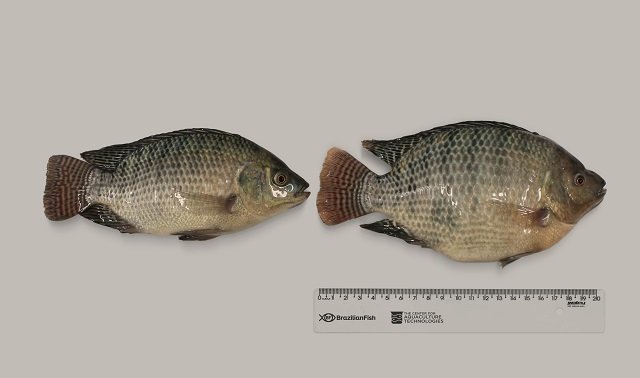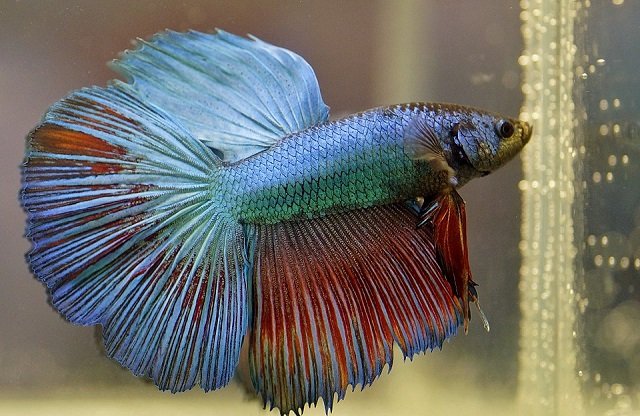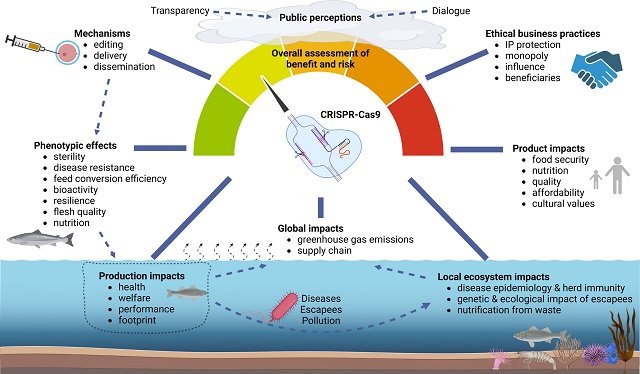
In a revolutionary advancement for the aquaculture industry, Brazilian Fish, a leading tilapia producer in Brazil, announces its entry into a new era of genomic technology. With this innovation, the company sets a new standard for aquaculture, enhancing productivity and offering benefits for both producers and consumers.
Similar to conventional genetic selection, which improves fish traits over time, genomic editing allows for the precise and accelerated introduction of beneficial variations. While a traditional breeding program can take decades, this technology achieves the same advancements in just one generation. Thanks to genomic editing, Brazilian Fish can enhance disease resistance, overall health, feed efficiency, and growth while reducing the environmental impact of large-scale tilapia production.
With strong investments in research and development, the company has established a strategic alliance with the Center for Aquaculture Technologies (CAT) in the United States to conduct genomic edits in key genetic regions of Nile tilapia. CAT is one of the pioneering organizations in genetic innovation for aquaculture and has made significant progress in improving key traits through genome editing in various aquatic species. The goal of this collaboration is to increase production performance and improve fillet yield, achieving in just one year what would typically take 20 years through conventional genetic breeding. This contributes to the efficiency and competitiveness of Brazilian aquaculture.
Improvements in production parameters
Initial studies indicate significant improvements in the production parameters of these genetically edited tilapia compared to standard commercial lines:
- Yield: ~40% increase in fillet yield.
- Growth: ~20% increase in growth rate.
- Feed Conversion Ratio (FCR): ~10% improvement in feed efficiency.
- Survival: Dependent on handling and farming conditions.
Although no scientific article has been published on these advancements yet, the CAT team has presented the findings at several scientific conferences.
Industry impact and commercialization
Commenting on this milestone, Dr. John Buchanan, CEO of CAT, stated:
“This achievement highlights the transformative potential of genomic editing in aquaculture, offering sustainable and responsible solutions to meet the world’s growing food demand. We are pleased to celebrate this breakthrough with the Brazilian Fish team, whose commitment and dedication have been exceptional.”
One of the key aspects of this innovation is the improvement in feed efficiency. Buchanan explains:
“Feed efficiency is crucial because it directly impacts the sustainability and profitability of aquaculture operations. The better a fish converts feed into biomass, the less feed is required to reach the desired weight. This reduces the demand for raw materials and minimizes waste, promoting more sustainable production.”
Regarding international commercialization, the product is still in the development phase, and market strategies are yet to be defined. The Brazilian market will be the first to receive the genetically edited tilapia, while availability in other countries such as Colombia, Peru, and Ecuador will depend on future strategic decisions.
Stay Always Informed
Join our communities to instantly receive the most important news, reports, and analysis from the aquaculture industry.
Production cost comparison
In terms of costs, CAT representatives emphasize that genetically edited tilapia has competitive advantages over commercially improved lines through conventional selection. The improvement in feed conversion reduces feed requirements, accelerates growth, and lowers feeding costs, making production more profitable and sustainable.
After two years of planning and research, the first batches of genetically edited tilapia have been successfully produced. These fish are currently being evaluated for performance and genomic analysis before being integrated into selective breeding programs at Brazilian Fish.
“As a pioneering company in Brazilian aquaculture, Brazilian Fish, together with CAT, is offering a disruptive solution that will drive technological transformation in industrial fish farming. In addition to improving access to safe and nutritious food, this initiative will promote greater sustainability and competitiveness in the sector, positioning tilapia as an even more accessible and competitive alternative in the global market,” added Ramon Amaral, CEO of Brazilian Fish.
Buchanan concluded:
“Commercializing innovation to drive productivity, sustainability, and feed people is our purpose at CAT. We are excited to see how this innovation becomes a reality alongside strategic partners like Brazilian Fish.”
Editor at the digital magazine AquaHoy. He holds a degree in Aquaculture Biology from the National University of Santa (UNS) and a Master’s degree in Science and Innovation Management from the Polytechnic University of Valencia, with postgraduate diplomas in Business Innovation and Innovation Management. He possesses extensive experience in the aquaculture and fisheries sector, having led the Fisheries Innovation Unit of the National Program for Innovation in Fisheries and Aquaculture (PNIPA). He has served as a senior consultant in technology watch, an innovation project formulator and advisor, and a lecturer at UNS. He is a member of the Peruvian College of Biologists and was recognized by the World Aquaculture Society (WAS) in 2016 for his contribution to aquaculture.




